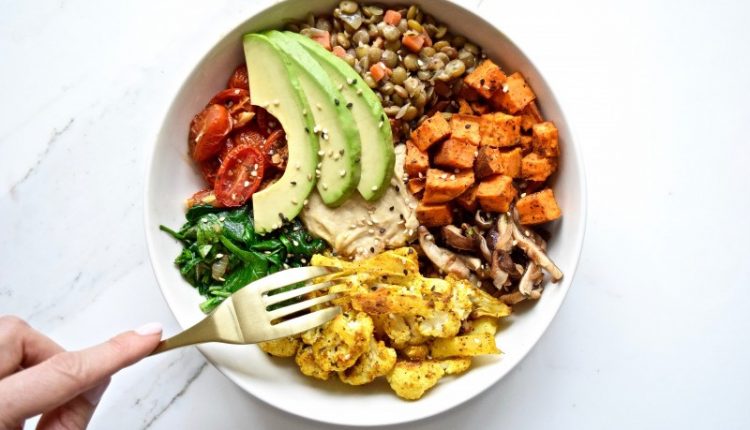
Do You Know How To Prepare A Healthy Plate Of Food?
You must have read countless articles on the importance of good nutrition. A well-balanced diet is essential to stay physically fit, mentally alert, and emotionally stable. That’s not all! A well-balanced diet can reduce the risk of high cholesterol levels, cardiovascular disease, obesity, fluctuating blood pressure problems, diabetes, and several other debilitating diseases. You might be wondering, what exactly is a well-balanced diet? To help make this easier for you, experts have suggested a formula to ensure that you obtain the right nutritional intake from your food.
The following rules have been formulated keeping a regular 9-inch dinner plate in mind. After you prepare your plate according to the guidelines specified, you should ideally still be able to see the rim of the plate. Think of the plate as being divided into 5 portions, each of which must be filled with one particular type of food. Are you ready to revitalize your body with a wholesome well-balanced meal? Let’s get right to it!
First Portion: Non-Starchy Vegetables
Vegetables are low in calories and pack a solid nutritional punch. Non-starchy vegetables include green beans, carrots, cauliflower, cucumbers, broccoli, beets, mushrooms, lettuce, and peppers. One cup of any one of these vegetables will only contain between 10 to 45 calories, regardless of whether they are raw, frozen, or canned and packaged as ‘low sodium’ or ‘no salt’ products. Experts explain that it is not the vegetables but the additional sauces and salad dressings that pile on the calories. Condiments should be used sparingly to keep the nutritional value high and the calorie count low.
This first portion should cover half (1/2) of your plate.
Second Portion: Protein Power
The second compartment should be filled with food that is rich in protein. You can choose between meat, egg, cheese, beef, chicken, and fish to fulfill this requirement.
This portion should cover a quarter (1/4th) of the plate. To put it simply, 1/4th portion of protein is equivalent to the size of a deck of cards.
Third Portion: Starchy Grains or Vegetables
The third compartment should be dedicated to starchy grains and vegetables such as corn, pasta, popcorn, rice, tortillas, bread, crackers, cereal, peas and potatoes. Refined grains go through a number of processes that strip away a large chunk of their nutritional value. Avoid white breads, white pasta and white rice, and opt for whole grains instead. Whole grain products include brown rice, whole wheat bread, and whole wheat pasta.
This portion should cover a quarter (1/4th) of the plate.
Fourth Portion: Fresh Fruits
The nutrients and minerals inherent in fruits are essential for your health and fitness. While nothing beats fresh fruit, you can also opt for canned or frozen fruits. However, if the packaging of the can clearly mentions that the fruit contains additional sugars, fruit juice, or heavy syrup, do not buy it! All of these ingredients increase the sugar content by a great margin. Look out for canned fruit that is labeled as ‘in its own juice’, ‘in light syrup’, ‘fresh fruit’ or ‘unsweetened’.
This portion should consist of half a cup of fruit.
Fifth Portion: Milk
The last compartment is reserved for dairy products, ideally an 8 oz glass of low fat or non fat milk. A 6 oz portion of plain, unsweetened yoghurt will also do if milk is not palatable to your taste. If you are unable to consume dairy products, opt for a small source of carbohydrates.
Now that you know about the exact science behind a healthy plate, you can structure each of your meals to be wholesome, nutritious and well-balanced.
